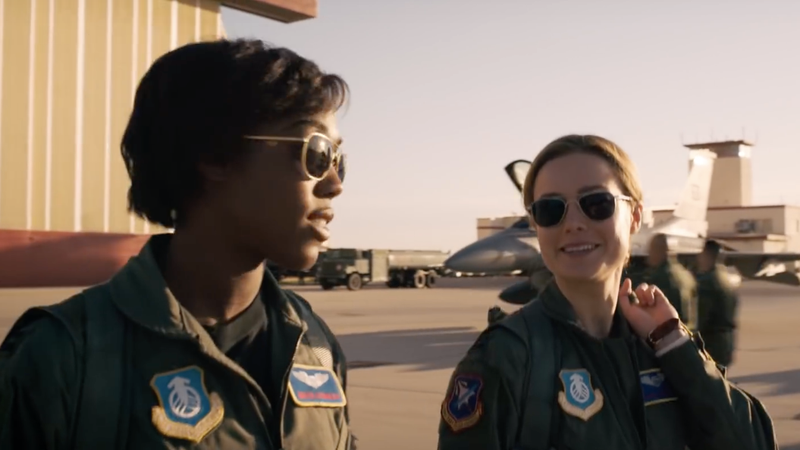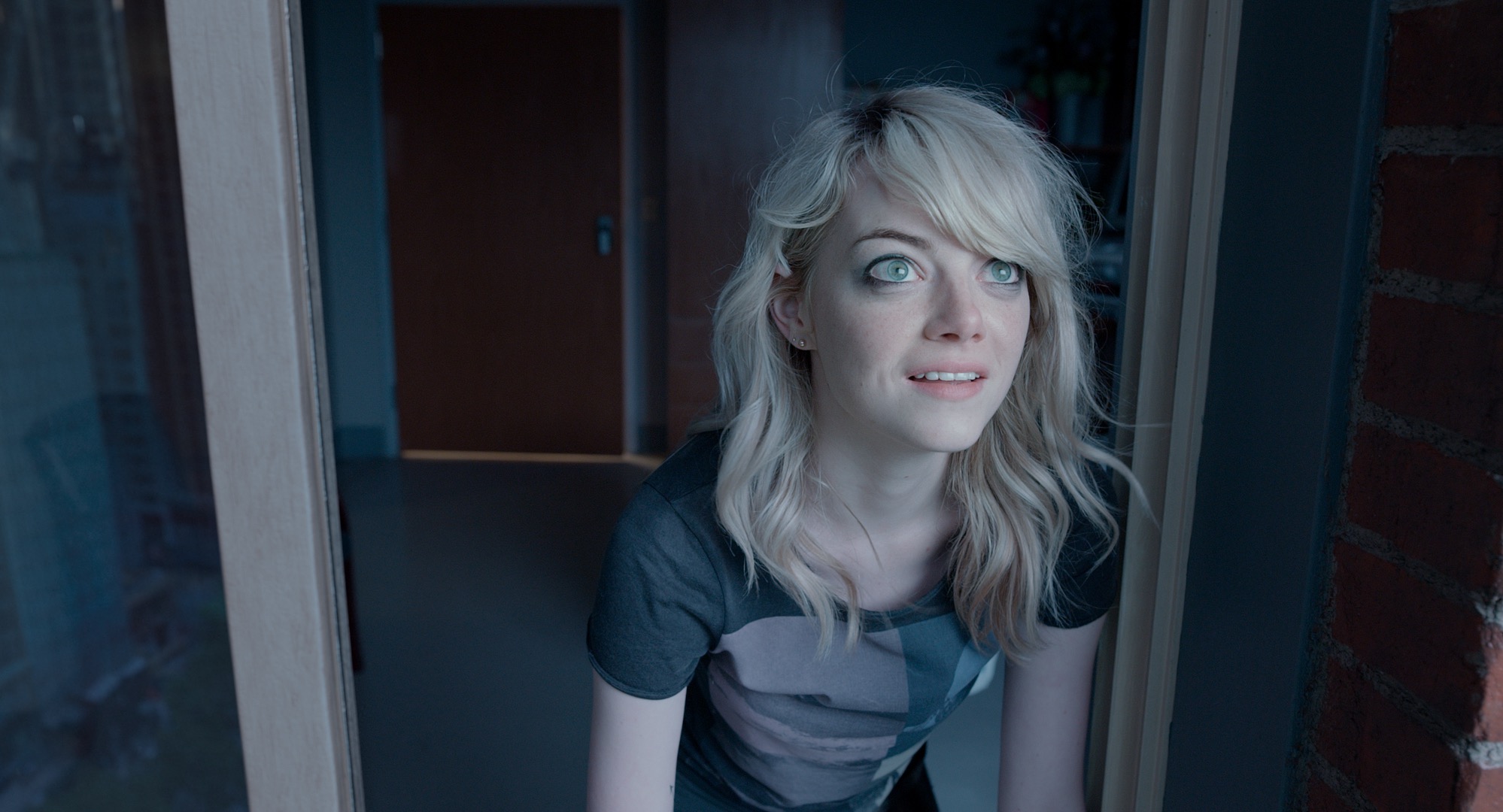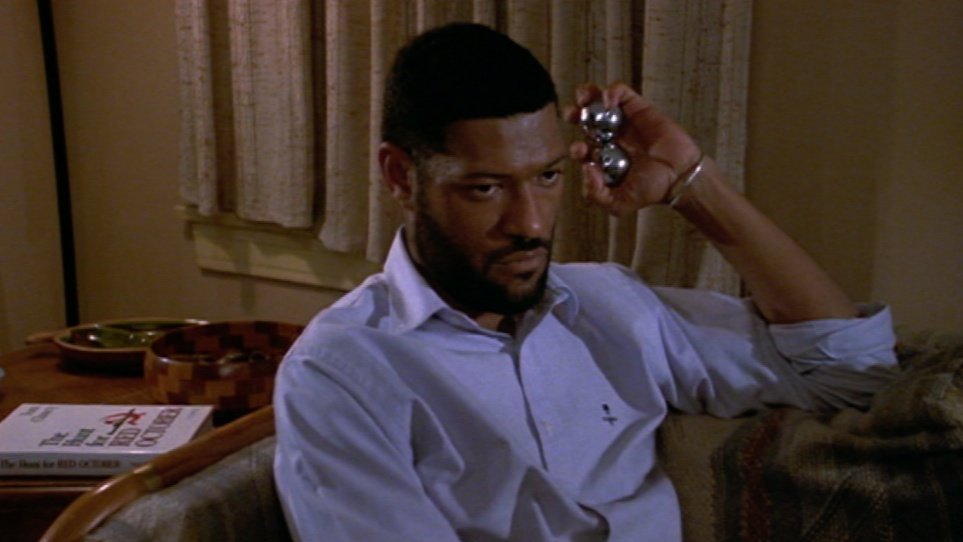There are risks to starting a story in medias res. The filmmakers do it in order to set up a very good twist midway through where the protagonist Carol Danvers has to re-evaluate her identity and allegiances, and a backstory is revealed. But it also makes the audience work quite hard in the first half hour in order to piece together a lot of information. And it also means that the relationship between Danvers and her childhood best friend Maria Rambeau is quite brittle when a huge amount of emotional weight is put on it. I found their reconciliation very difficult to buy into. The actors do a good job of conveying the turbulent emotions of the scene, but end up overselling it.
The biggest emotional whallop comes later, when Captain Marvel gets her hero moment and rejects the psychological subjugation of her adopted Kree culture. That's a product of the film spending a longer amount of time setting up those bonds before they are broken. The directors Anna Boden and Ryan Fleck have been here before – Half Nelson was also a story of a young woman growing disillusioned with a charismatic mentor and substitute father-figure. A superhero film is not a perfect vehicle for the subtle shifts in relations that the indie drama can go to town on. And it's true that Brie Larson and Jude Law don't have enough screen-time together to flesh out their relationship. But Marvel movies are functional things – and it works well enough for the final fist blast to leave an impact.
As with Black Panther on race, Captain Marvel's feminism is deft but understated. Mixed in Carol Danvers's suppressed memories are moments of everyday sexism, and there's a rather nice touch when she blasts Schwarzenegger's head off a True Lies banner, leaving just the arm candy Jamie Lee Curtis standing. There is no love interest, although a bolder film may have pushed the friendship with Maria Rambeau in a more overtly romantic direction – that possibility is left open in the film. Given its success despite the best efforts of online trolls (who tried to manipulate the audience rating on Rotten Tomatoes) queer representation in a Marvel Studios product can't be far off.
24.3.19
15.3.19
Birdman (or, The Unexpected Virtue of Ignorance)
It's more interesting, and biting, if the superheroics aren't real. Iñárritu is very happy to have a thousand interpretations bloom, and keep his own intentions close to his chest. And in fact, the finale was drastically rethought after the original comedic ending featuring Johnny Depp being taunted by Jack Sparrow was abandoned. The writers of the film wanted something which focused on the father-daughter relationship and had more pathos. That provides the clue. Rather than repeating the motif of famous actors being trapped by their most famous character, instead the daughter of a famous actor becomes trapped by the legacy of the father. While he chooses death and escape, she is given the opportunity to profit from his notoriety – the viral tweets, TV interviews and book deals are hers for the taking. She looks down at the corpse and then looks up, imagining not a superhero sequel but social media stardom instead.
The best joke of the film is that our attempt to fulfil our personal life-project and achieve transcendence is always inauthentic. Michael Keaton's Riggan Thomson does the play to escape his former blockbuster actor past and be more admired than George Clooney. Sartre was wrong – you are always in bad faith, no matter how much you risk and how much you fail. The film turns that bad faith into a character in Riggan's mind – the Birdman of his past tempting him to fly above the little people. But the other part of Riggan's mind is just as corroded – the glory of the theatre is riddled with as much sleaze, abuse and grim compromises as Hollywood. The dark secret at the heart of the film is that the only real freedom is death. That, and perhaps the heightened sense of the ridiculous which is the film's tone throughout. If you can't beat the system, you might as well laugh at it.
It's a triumph of engineering, put together almost back-to-front – the editing and post-production being planned out in advance so that the continuous shot effect could work. That amount of cinematic trickery masks the fact that in other respects this feels like watching a play: the setting mostly stays the same, there are only five or six main characters, and the action is built around set-piece exchanges of dialogue, of which Emma Stone's tirade about not being special is a particular highlight. But Keaton is also a bit of a revelation, as much as Riggan is for his theatre audience, although only we get to see his superb comic timing. Iñárritu should leave the ponderous dramas alone and do more funny stuff – it's a level above.
The best joke of the film is that our attempt to fulfil our personal life-project and achieve transcendence is always inauthentic. Michael Keaton's Riggan Thomson does the play to escape his former blockbuster actor past and be more admired than George Clooney. Sartre was wrong – you are always in bad faith, no matter how much you risk and how much you fail. The film turns that bad faith into a character in Riggan's mind – the Birdman of his past tempting him to fly above the little people. But the other part of Riggan's mind is just as corroded – the glory of the theatre is riddled with as much sleaze, abuse and grim compromises as Hollywood. The dark secret at the heart of the film is that the only real freedom is death. That, and perhaps the heightened sense of the ridiculous which is the film's tone throughout. If you can't beat the system, you might as well laugh at it.
It's a triumph of engineering, put together almost back-to-front – the editing and post-production being planned out in advance so that the continuous shot effect could work. That amount of cinematic trickery masks the fact that in other respects this feels like watching a play: the setting mostly stays the same, there are only five or six main characters, and the action is built around set-piece exchanges of dialogue, of which Emma Stone's tirade about not being special is a particular highlight. But Keaton is also a bit of a revelation, as much as Riggan is for his theatre audience, although only we get to see his superb comic timing. Iñárritu should leave the ponderous dramas alone and do more funny stuff – it's a level above.
3.3.19
Boyz n the Hood
'Boyz' being the operative word – with the film starting out by introducing the main characters as 10-year-olds in order to give us the deep background to how they turn out as teenagers. Parenthood is the deciding variable in their contrasting fates, notwithstanding the conspiracy theories about black neighbourhoods being filled with liquor stores and guns purposefully so that the people that live there can kill themselves. The Atticus Finch-like Furious Styles, played with a winning intensity by Laurence Fishburne, is the one who preaches this stuff to an unconvinced audience of hoodlums. But it's the example he sets to his son that proves more influential.
Even that is almost not enough. The film builds to a climactic choice Tre Styles (Cuba Gooding Jr in his first role) has to make between avenging his friend and stepping out of the cycle of violence. The film expertly pivots from one turning point to another in the dilemma, and the ending is wonderfully balanced between them, with Tre refusing to disown a shell-shocked Ice Cube after his night-time bloodthirsty raid on a rival gang. They are brothers, even though their different decisions send one to university and the other to the grave.
John Singleton's picture is full of passion for the subjects and the culture he is portraying, although he is also pulled in two directions – between documenting the texture of life in South Central LA with its community barbecues and porch-side drinking sessions, and the urge to create a sweeping romantic coming-of-age story for the hero with a heart of gold. Although I found the vérité parts of the film more effective, there's no doubt that the artificial 'cinematic' elements contributed to the film's success (and two Oscar nominations).
Even that is almost not enough. The film builds to a climactic choice Tre Styles (Cuba Gooding Jr in his first role) has to make between avenging his friend and stepping out of the cycle of violence. The film expertly pivots from one turning point to another in the dilemma, and the ending is wonderfully balanced between them, with Tre refusing to disown a shell-shocked Ice Cube after his night-time bloodthirsty raid on a rival gang. They are brothers, even though their different decisions send one to university and the other to the grave.
John Singleton's picture is full of passion for the subjects and the culture he is portraying, although he is also pulled in two directions – between documenting the texture of life in South Central LA with its community barbecues and porch-side drinking sessions, and the urge to create a sweeping romantic coming-of-age story for the hero with a heart of gold. Although I found the vérité parts of the film more effective, there's no doubt that the artificial 'cinematic' elements contributed to the film's success (and two Oscar nominations).
Subscribe to:
Comments (Atom)





